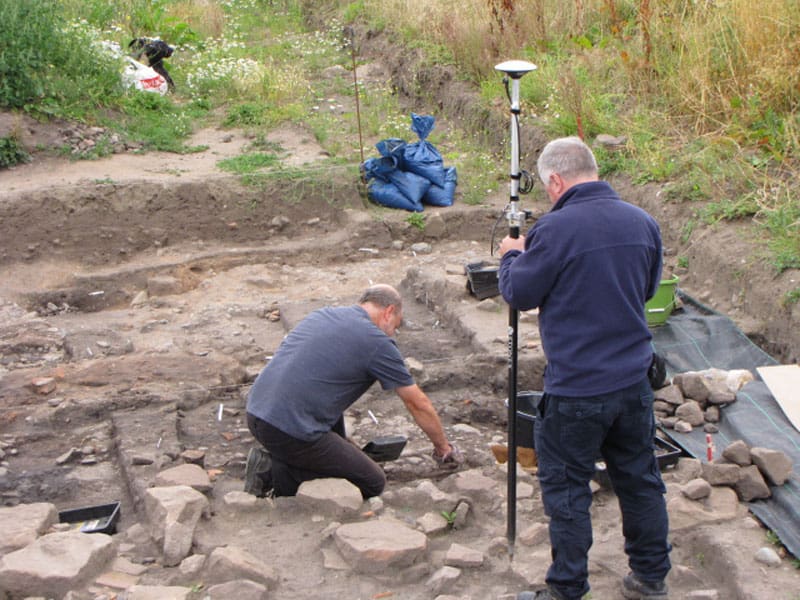Newly Discovered Roman Fort in Northern England Gains Official Recognition
Burscough, England —Ansa reports that the site of a first-century A.D. Roman fort in northwestern England has received official recognition from Historic England, a government body dedicated to historic preservation.
The ruins comprise a 30,000 sq m fort, roads, and a smaller fortlet and experts believe the find will unlock unknown details of how the Romans settled and travelled around the area.
Considered alongside other forts in the region, including those at Wigan and Ribchester, Burscough’s will provide great insight into Roman military strategy. It is believed that the area was occupied multiple times throughout hundreds of years, a theory that is backed up by the variety of pottery found at the site.
Historic England says the lines of the fort’s defenses are identifiable on the geophysical survey and aerial photos, but the north-west and south-west corners are also visible as slight earthworks on Lidar, which uses laser light reflections to produce 3D images.

The northwest corner of the fort is visible as the slight earthwork of a broad bank about 12m wide, with a regular, broad and shallow external ditch; the latter is interpreted as a shallow quarry ditch dug during the construction of the rampart.
Several large depressions visible in the wider landscape are considered to be post-medieval extraction, probably marl pits: one of these pits sits within the angle of the northwest corner of the fort.
The number of ditches indicates more than one phase of occupation, and it is considered that a later, small fortlet overlies the eastern rampart of the earlier fort.

Several internal features have been revealed by geophysical surveys including a well-defined eastern gateway with double gate towers, and numerous stone buildings interpreted as granaries or barracks. Limited trial trenching of the latter has revealed the presence of a large stone, buttressed building typical of a Roman granary.
The geophysical survey has also revealed the buried remains of a broad section of Roman road approaching the fort on the east side. A similar feature is thought to be associated with the fort’s southern entrance.
For several years, a non-profit archaeology group has been managing the site and allowing people to help with the excavation of the ruins but the location of the fort has largely been kept a secret.
Those interested in visiting were able to pay to take part in organized digs, while items of Roman pottery have been found in nearby fields by passing walkers.
The fort had survived regular ploughing through the years before the archaeology group took an interest in the site but concerned residents noticed diggers on the field in recent weeks and feared that the invaluable findings could be lost forever.
But, possibly partly as a result of those fears being raised with Historic England and then the Government’s Department for Culture, Media and Sport (DCMS), the ruins have now been classified as a Scheduled Monument.
That means it is a criminal offence to destroy or damage it; do any work to remove, repair or alter it; use a metal detector without prior consent, or remove any historic or archaeological object from the site without prior consent.
A spokesperson for Historic England said: “DCMS recently agreed with our advice that this site should be protected as a scheduled monument because it is a highly significant find of a Roman fort which has survived well.
‘‘We are actively in contact with the owners and local authority to offer advice and support on how best to manage this site to ensure its future.”




